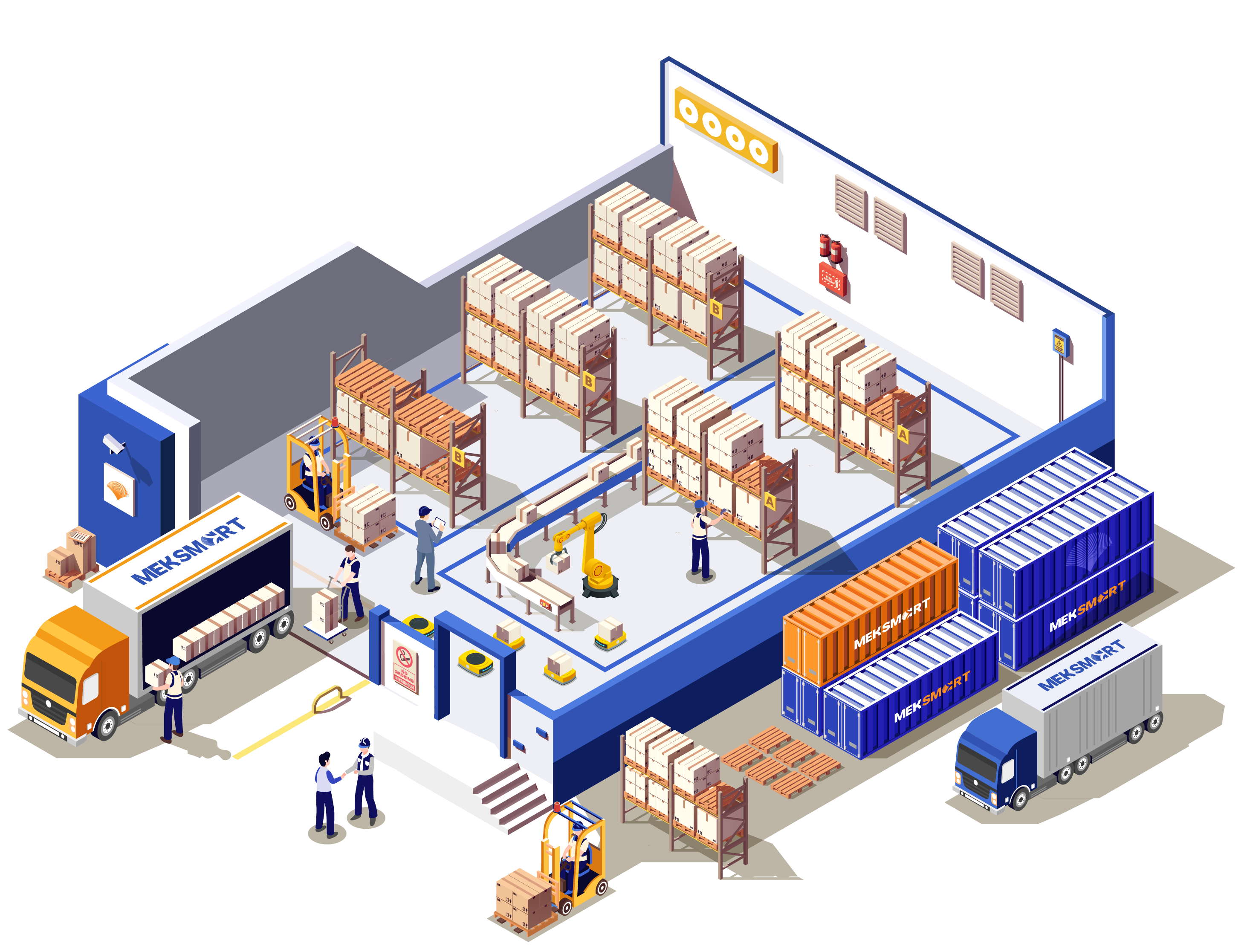MEKSMART
GENERAL NEWS
Author: Meker Meksmart
Update: 25/11/2022
WAREHOUSE OPERATIONS IN THE FUTURE
Due to the changes created by the Covid-19 black swan, the retail ecosystem has had to accelerate its transformation, as it caters to consumers with ever higher omnichannel shopping expectations. Not to mention, warehouse operations are busier than ever, and companies have to stockpile inventory to avoid shortages.
All of these factors lead to increasing complexity for companies' supply chains, where warehouses are increasingly important. Here are 5 ways that a smart warehouse management system can optimize warehouse efficiency and adaptability.

5 ways to optimize with a smart warehouse management system
1. Transition to the cloud
The shift from the pandemic has made global supply chains increasingly unpredictable and complex. Today's ecosystem requires flexible cloud computing solutions and provides continuous innovation, to limit stagnation.
Cloud computing eliminates the need for costly, time-consuming software upgrades and provides instant access to new capabilities that can be delivered at a steady pace.
The technology is also designed to handle natural spikes and demand downturns that most businesses experience, especially those with seasonal spikes in demand around holidays or other events.
The ability to scale as needs change helps ensure supply chains continue to operate at peak performance while controlling costs.
2. Platform application with microservices small service architecture
Solutions should be purposefully established so that other systems can work in conjunction with each other. Platforms designed entirely from microservices are resilient and deliver continuous innovation, along with scalability, scalability, and availability.
This architecture enables the segmentation of the commercial supply chain into discrete functional components that can be assembled to create new experiences.
Microservices also help eliminate redundancy as every component is part of a shared application platform, allowing for seamless upgrades on a regular basis.
3. Unify the supply chain
Modern cloud power technology is key to unified solutions working together rather than operating individually, giving manufacturers, distributors, and retailers a clear grasp of the product lifecycle.
From ordering, shipping, and delivery, a seamless supply chain is only possible when the management system works seamlessly together in real-time.
4. Drive productivity with robotics and automation
The development of robotics and automation in warehouses began before COVID. However, the pandemic's labor shortage has led to an explosion of these technologies.
One of the ways that are considered effective is the combination of humans and robots. Instead of replacing the workforce, robots can work in addition to human work.
Robots can handle repetitive tasks without the need for decision-making, allowing humans to use their time more efficiently.
In terms of technology, businesses can apply the WMS intelligent warehouse management system combined with the built-in warehouse execution system (WES), optimizing the way robots and the workforce are used in warehouse operations.
5. Improve human efficiency
Modern WMS solutions also provide supervisors with a host of new ways to monitor performance, solve problems, change priorities, and maintain service level agreements – SLAs that matter every day.
Epilogue
Companies are operating in a rapidly changing and constantly changing supply chain environment. To meet demand and remain competitive, distribution needs to be more efficient and adaptable than ever before.
That's why industry managers are turning to technology to help solve their most pressing problems, bringing supply chain solutions or specifically warehouse operations into their core business strategies.
Now more than ever, it's critical for technology providers to equip businesses with the tools to maximize human and automated assets, unify supply chain processes, and continually innovate to overcome any challenges that arise.











